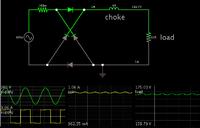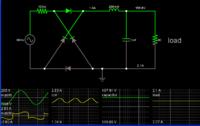p72
Member level 3

Hi all,
I have few questions:
(1.) As i know if we put Capacitor in to DC path, it will block DC and would not allow to go through it. But it allows AC to pass it through. How can I block AC? (By Inductor?)
(2.) If I use Bridge Rectifier with the AC input (240Vac,50/60Hz), Will I get "always" DC as an output?
Thank you in advance,
p72
I have few questions:
(1.) As i know if we put Capacitor in to DC path, it will block DC and would not allow to go through it. But it allows AC to pass it through. How can I block AC? (By Inductor?)
(2.) If I use Bridge Rectifier with the AC input (240Vac,50/60Hz), Will I get "always" DC as an output?
Thank you in advance,
p72






